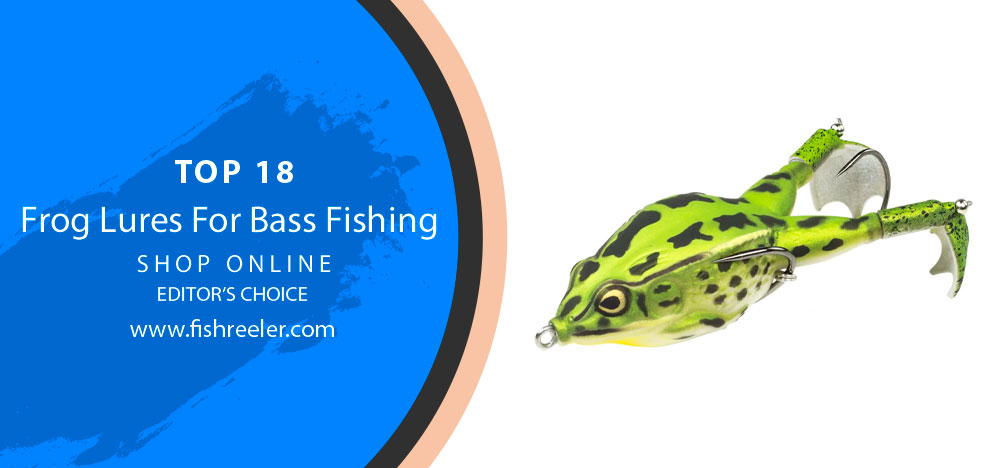
Unlock the Secrets of Frog Lures: A Pro’s Guide to Bass Fishing Success
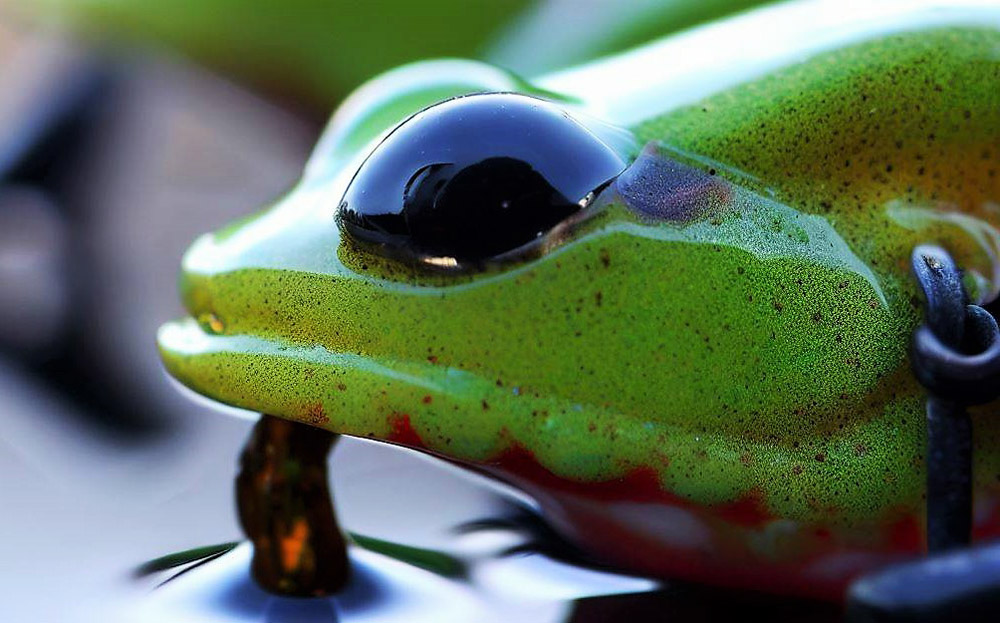
Jumpstart Your Bass Fishing Success with Frog Lures
Frog lures have been a game changer in the bass fishing world for quite some time. These life-like imitations of frogs are designed to trigger predatory instincts in the bass, making them an irresistible option for avid anglers. The ability of frog lures to be fished in a variety of conditions, especially in heavy cover and vegetation where bass love to hide, has made them an essential tool in any bass fisherman’s tackle box. Their versatility and effectiveness have made frog lures an increasingly popular choice among professionals and enthusiasts alike.
Unlocking the Full Potential of Frog Lures
The aim of this article is to serve as a comprehensive guide for using frog lures effectively in your bass fishing endeavors. By understanding the anatomy of frog lures, selecting the right ones to match your fishing conditions, and mastering various techniques for casting, retrieving, and presenting these lures, you’ll be well on your way to increasing your catch rates and overall bass fishing success. In addition, we’ll provide insight into the best equipment to use for frog fishing and share tips and tricks from professional anglers that can help you refine your skills and overcome common challenges. Whether you’re new to using frog lures or an experienced angler looking to up your game, this guide has something for everyone.
Leap Ahead of the Competition: Discover Frog Lures for Bass Fishing

Whether you are a beginner or an experienced fisherman, using frog lures for bass fishing is a great way to catch fish. Frogs lures are a popular choice for bass fishing, and there are many different types to choose from.
If you are looking for the best frog lures for bass fishing, you’ve come to the right place! In this blog post, we will share with you our top-rated frog lures for bass fishing. We’ll also provide you with some helpful tips on how to use these lures to catch more bass fish. So, what are you waiting for? Let’s get started!
1# LIVETARGET Hollow-Body Frog Popper
Looking for an extra-durable and effective frog popper? Look no further than the LIVETARGET Hollow-Body Frog Popper! This top-of-the-line frog popper is designed by pro angler Scott Martin and features a narrow profile and cupped face for an unbeatable design. The hollow body and collapsible body make it easily walk across the water while creating a unique splash and tantalizing sound that is sure to attract fish. Plus, the extra-strong forged hook ensures fast penetration and solid hookups. Don’t go another fishing trip without the LIVETARGET Hollow-Body Frog Popper!
2# Lunkerhunt Lunker Frog
The Lunker Frog is perfect for catching those big bass. Its weedless design and high-quality components ensure a successful fishing experience, while its super-soft construction ensures that you won’t damage the fish when you catch it.
3# Zoom Frog
The Zoom Frog is the most aggressive action buzz frog on the market. With its added bulk and beefed-up ultra-vibe legs, the Frog takes the proven pitter-patter of Zoom’s popular Horny Toad and magnifies it into a water-churning, the bubble-trailing commotion that trophy bass just has to blow upon. With the Zoom Frog, violence begets violence, and that’s a good thing for the angler looking to bring in a heavy sack! Salt impregnated; floats at rest.
4# LIVETARGET Freestyle Frog
The LIVETARGET Freestyle Frog is an anatomically-perfect topwater bait designed to imitate a real frog. It’s made with exclusive Injected Core Technology, which encourages bass to focus on and strike the body. The lifelike Inner-Core body profile, soft transparent Exo-Skin, and clear Exo-Skin twin-tail legs all combine to create a natural look with water-frothing action. This bait is sure to bring the strikes you’re looking for!
5# Terminator Walking Frog
The Terminator Walking Frog is perfect for targeting finicky bass in heavy cover. Its ultra-soft body compresses easily on the strike, allowing the premium VMC double hook to penetrate cleanly. A heavy-duty line tie ensures that it can handle the nastiest cover, while the rear-weighted design gives it a lifelike profile. The widest hook gap available ensures that you’ll land more bass, while the round rubber legs provide maximum action and realism.
6# Scum Frog BigFoot
If you’re looking for a top-of-the-line frog bait that’s sure to attract big bass, look no further than the Scum Frog BigFoot. This unique bait’s oversized feet create a disturbance in the water that’s irresistible to fish, and its floating design means you can spend more time fishing in Weed beds, around stumps, and in brushy areas where big bass are likely to hide. Plus, the Scum Frog BigFoot’s bubbling action is sure to attract even more fish when retrieved in short strokes with pauses in between. So don’t go another day without giving the Scum Frog BigFoot a try – your next big catch is waiting!
7# Savage Gear Dual Chamber Walker Frog
Introducing the Dual Chamber Walker Frog – perfect for big, tough game fish! This heavy-duty hook is designed to give you a deep-set and keep your catch on the hook, even under a tough fight. Plus, the premium rubber skirt offers improved action and lifelike movement that entices fish to bite. Best of all, dual-cavity construction minimizes water intrusion so your frog stays on top of the water – no need to worry about it sinking. And with hand-painted details and realistic markings, this frog looks as good as it performs. Get ready to land some serious trophies with the Savage Gear Dual Chamber Walker Frog!
8# 6th Sense Vega Frog
The 6th Sense Vega Frog is the perfect bait for catching big fish. Its slender keel-shaped belly produces a 180° walking motion that’s easy to use, and its unique leak-resistant belly plug ensures you won’t lose your bait when it hits the water. Plus, the heavy-gauge, 5/0 black-nickel braid hook delivers extra power and strength for pulling monsters out of cover.
9# Scum Frog
Looking for a frog lure that can get into all the nooks and crannies where big bass hide? Then you need the Scum Frog! This unique lure has a super-soft body and weedless hidden-hooks design that allow you to fish in places other lures can’t reach. Plus, the high-action skirt undulates with every movement, making it even more irresistible to fish. Whether you’re fishing in weeds, lily pads, or around stumps and limbs, the Scum Frog is sure to attract the attention of big bass. So don’t be afraid to get into the thick of things – with the Scum Frog, you’re sure to land a whopper!
10# Lunkerhunt Combat Frog
The Lunkerhunt Combat Frog is the most lifelike frog on the market today. This weedless design mimics an adult frog, with swimming legs that extend during your retrieve and then retract on the pause. At rest, the lure measures 2.5” yet extends to 4.5” on the retrieve. Weedless design means you can fish this lure in a heavy cover without getting hung up. The Frog’s body drops down a little into the water, just like a live frog or bullfrog. This action produces a higher percentage of hookups. Super-soft hollow body construction gives it an incredibly realistic feel in the water, while high-quality components make it durable enough for even the most hardcore anglers.
11# Terminator Popping Frog
Ready to take your topwater bass fishing to the next level? The Terminator Popping Frog is perfect for walking action and popping in slop fields. With its extra-soft body, premium VMC double hook, and the heavy-duty welded line tie, this frog is built to perform.
12# Scum Frog Popper
The Scum Frog Popper is one of the most legendary topwater baits on the market, and for good reason. It combines the best elements of the Scum Frog with a head-turning noisemaker that will command attention in all directions. The weedless design ensures you can throw it in a thick cover without getting hung up or towing moss, while its great hookup power is perfect for finicky bass or when conditions are less than ideal.
13# Lunkerhunt Prop Frog
Have a look at the Lunkerhunt Prop Frog! This top-of-the-line bait features premium dual hooks that encase the body, ensuring a high hookup percentage, while the twin-propeller feet create a strong churning, gurgling action that is sure to attract attention. The weedless design means you’ll be able to fish in a heavy cover without fear of snagging, while the protected trailer hook ensures superior hookups. So make sure you’re using the best of the best – get yourself a Lunkerhunt Prop Frog and watch your catches start piling up!
14# Scum Frog Launch Frog
Check out the Scum Frog Launch Frog! This heavy-duty bait is perfect for giving you the edge when fishing in ponds, lakes, and rivers. The tungsten parasite weight system adds weight without bulking up the hook shank, while the buoyant body displaces water to keep your frog afloat. Plus, the 40-strand premium silicone skirt legs create a realistic kicking action that is sure to attract fish. And with the brass-button rear weight, you can be confident that your frog will always maintain a nose-up position. So why wait? Get your hands on a Scum Frog Launch Frog today!
15# Megabass Big Gabot Frog
The Megabass Big Gabot Frog is perfect for anglers looking to land big fish in heavy cover. Its optimized hook bend, penetration angle, and wire diameter increase your hook-up ratio, while the Catamaran Mouth makes pinpoint turns easy. The open mouth also creates bubbles and popping noises that drive the bass wild, while the redesigned weight and internals keep it swimming perfectly. Plus, the custom-designed hook ensures a solid hold on those big fish.
16# Scum Frog Trophy Series
Looking to snag a big one? Then you need the Scum Frog Trophy Series! These big, pre-weighted baits are perfect for targeting big fish. And they sit higher in the water than standard frogs, so they’re easy to spot. The long, supple filament legs deliver an erratic kicking action that is sure to attract attention. And the large 3/8″ reflective eyes are impossible to miss. But the best part is the ultrasharp owner hooks. They’re practically invisible from underneath, so your prey won’t see them coming until it’s too late!
17# Zoom Bait Popping Frog
The Zoom Bait Popping Frog is the perfect bait for bringing fish out of cover and into the boat. Its unique concave mouth and third tail between the legs are specially designed to mimic a real frog, while its extra-strong hooks ensure that you’ll be able to land fish even in thick vegetation. Plus, its proven craftsmanship will help you catch more fish on every trip.
18# Scum Frog Little Bigfoot Frog
The Scum Frog Little Bigfoot Frog is just the bait you need for a truly top-notch fishing experience. Its water-disrupting, oversized paddle feet are ideal for kicking up big bass action, while its weedless design and ability to float make it perfect for fishing around structures where trophy bass reside. Plus, the Little Bigfoot Frog’s mind-blowing, water-bubbling action is sure to attract more fish to your line. So whether you’re looking to cast to weed beds or simply reel in short strokes between pauses, this bait will help you make the most of your time on the water.
The Anatomy of Frog Lures
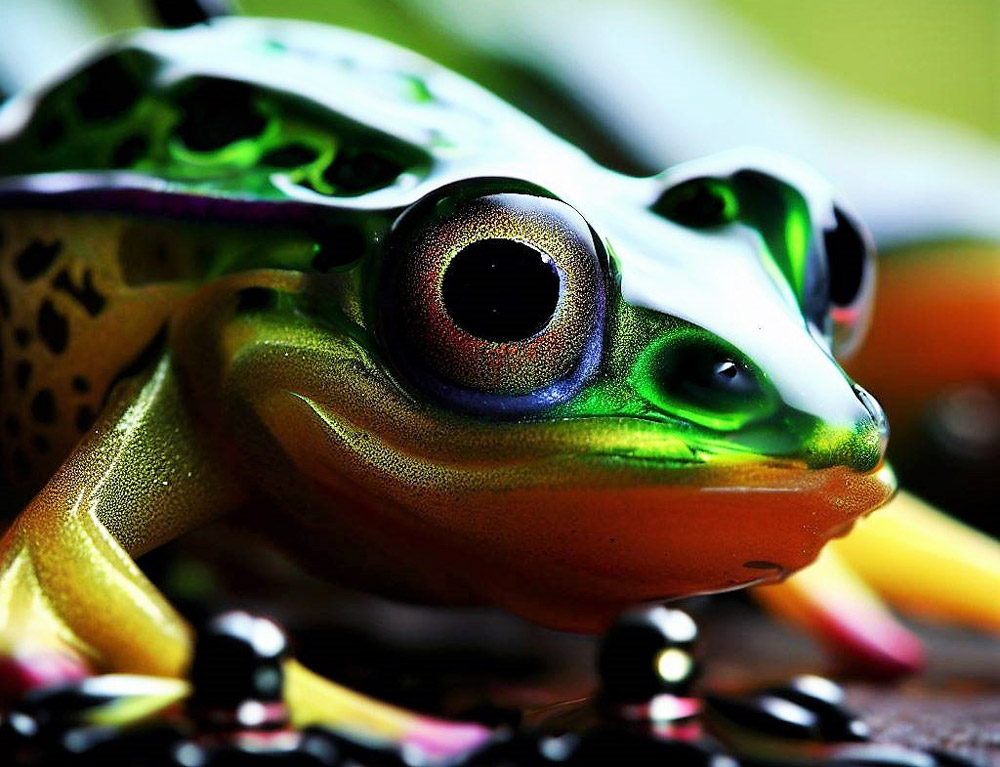
Material Matters: Plastic vs. Rubber Frog Lures
🌊Plastic vs. rubber: pros and cons
Frog lures are primarily made of either plastic or rubber materials. Each has its own advantages and disadvantages. Plastic lures are generally more durable and can withstand numerous bites without getting damaged. They also tend to have a more realistic appearance, thanks to advanced molding techniques. However, plastic lures may not have as much natural movement in the water compared to rubber lures.
Rubber lures, on the other hand, are more flexible and have a lifelike action in the water, which can be particularly enticing to bass. They are also generally more affordable than their plastic counterparts. The downside of rubber lures is that they can be less durable and may tear more easily after repeated use or aggressive strikes from fish.
🌊Realistic features and colors
Modern frog lures often come with realistic features and colors that closely mimic actual frogs. This includes intricate patterns, 3D eyes, and even legs that move naturally in the water. These realistic details can be crucial in fooling bass into thinking the lure is a genuine frog, increasing the chances of a successful strike.
An In-Depth Look at the Different Types of Frog Lures
🐬Hollow-body frogs
Hollow-body frog lures are designed with a soft, hollow interior that collapses when a bass bites down on it, exposing the hook for a solid hook-set. These lures are excellent for fishing in heavy covers, such as weeds and lily pads, due to their weedless design.
🐬Soft plastic frogs
Soft plastic frogs are made from a solid, yet flexible material that provides a natural swimming action. These lures are versatile and can be fished in various conditions, including open water, submerged vegetation, and around structures. Soft plastic frogs can be rigged with a variety of hooks, including Texas rig or wacky rig setups.
🐟Popping frogs
Popping frogs feature a concave face, which creates a popping or chugging sound when retrieved across the water’s surface. This sound and the accompanying surface disturbance can attract bass from a distance, making popping frogs ideal for covering large areas and drawing fish out of hiding.
🐟Weedless frogs
Weedless frog lures are designed to minimize snags when fishing in heavy cover or around structures. They typically feature a streamlined body shape and hooks that are positioned close to the body of the lure, reducing the chances of catching on vegetation or other obstacles.
Get Hooked: Choosing and Rigging the Right Hooks for Your Frog Lures
🐳Weedless hooks
Weedless hooks are designed with a guard or other mechanism that prevents the hook point from catching on weeds or other obstructions. These hooks are ideal for fishing frog lures in heavy cover, as they allow the angler to cast and retrieve the lure without worrying about snags.
🐳Double hooks
Double hooks, also known as “frog hooks,” feature two hook points on a single shaft. This design increases the chances of hooking a fish when it bites the lure. Double hooks are commonly used with hollow-body frog lures, as they can be hidden within the lure’s body and exposed during a strike.
🐳Stinger hooks
Stinger hooks are smaller hooks attached to the main hook or the lure itself, often via a short piece of wire or monofilament. These hooks can help improve hook-up ratios by providing an additional hook point to catch fish that might otherwise miss or short-strike the main hook. Stinger hooks can be used with various frog lure types, but they may need to be removed or adjusted when fishing in heavy cover to avoid snags.
Frog Lure Selection: Matching the Hatch
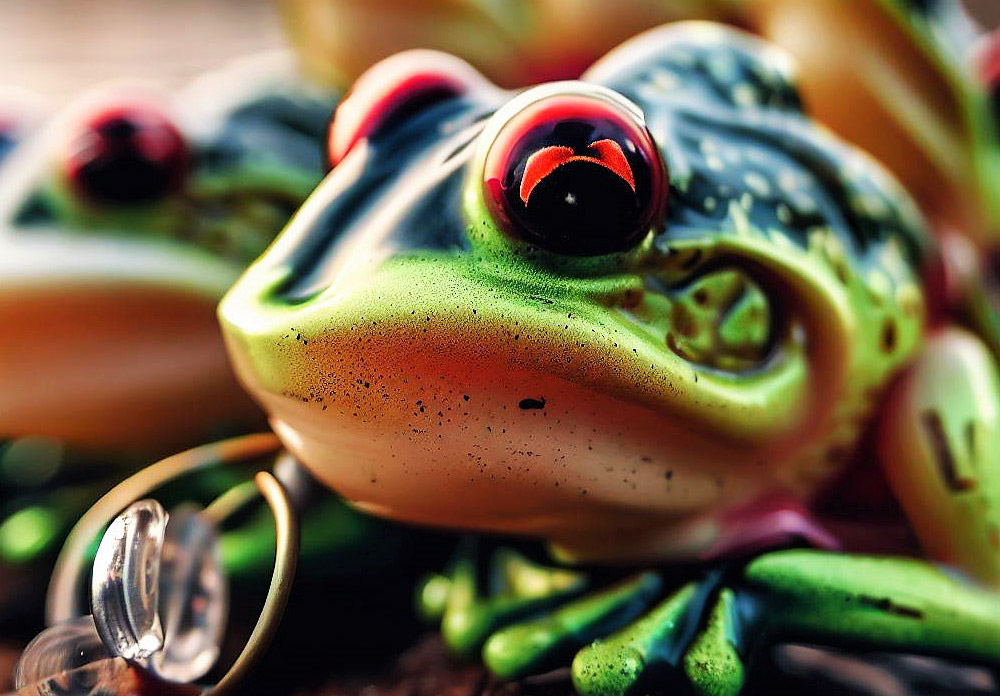
The Science Behind Selecting the Perfect Frog Lure
🐋Local forage
Understanding the natural forage in the area you’re fishing is crucial when selecting the right frog to lure. Observe the size, color, and species of frogs that bass are likely to encounter in the local ecosystem. Choose frog lures that closely resemble the real-life frogs in the area to increase your chances of enticing a bite.
🐋Weather conditions
Weather conditions can have a significant impact on bass behavior and lure selection. On sunny days, bass might hold tight to cover, and using a more natural-looking frog lure can be effective. Conversely, on cloudy or overcast days, the bass is more likely to be actively feeding, and a louder, more attention-grabbing frog lure like a popping frog might be the better choice.
🐋Time of day
Bass are known to be more active during low-light conditions, such as early morning or late evening. During these times, using frog lures with darker colors or those that create more disturbance on the water’s surface can increase your chances of attracting a bite. During brighter periods, the bass may be more inclined to investigate subtle movements, so opt for a more natural-looking lure with realistic swimming action.
🐋Seasonal patterns
Bass behavior and preferred forage can change with the seasons. In spring and early summer, bass is more likely to be found in shallow water, making it an excellent time to use frog lures. As summer progresses and temperatures rise, the bass may move to deeper water, making it more challenging to catch them with frog lures. During fall, bass will often return to shallow water in search of food, providing another opportunity to target them with frog lures.
Choosing the Right Color: A Guide to Fooling Finicky Bass
When selecting frog lure colors, consider the following guidelines:
| Color Type | When to Use | Explanation |
|---|---|---|
| Natural | Clear water, accurate mimicry of local forage | Greens, browns, and tans blend well in clear water and closely resemble natural food sources. |
| Dark | Low-light conditions, stained or muddy water | Black, dark blue, or dark green create a visible silhouette in low visibility situations. |
| Bright | Overcast conditions, covering large areas of water quickly | White, chartreuse, or yellow grab bass attention and help you search for fish more effectively. |
Size Matters: Finding the Perfect Frog Lure Weight
When choosing the size and weight of a frog lure, consider the size of the local forage and the type of cover you’ll be fishing. A larger, heavier frog lure can be more effective in dense vegetation, as it creates more disturbance on the water’s surface and can be easier to cast accurately. Smaller, lighter frog lures may be more suitable when trying to mimic smaller forage species or when fishing in open water or around sparse cover. Experiment with different sizes and weights to find the best combination for your specific fishing conditions.
Frog Lure Techniques for Maximum Effectiveness

Cast Away: Tips for Hitting Prime Bass Locations
🐋Targeting prime bass locations
To maximize your success with frog lures, focus on casting to prime bass locations. These can include dense vegetation, submerged or floating cover, near laydowns, docks, or other structures where bass are likely to hide. By targeting these high-percentage areas, you increase your chances of attracting a strike.
🐋Casting accuracy and distance
Being able to accurately cast your frog lure is essential for effective fishing. Practice your casting technique to ensure you can place your lure close to cover or other prime bass locations without spooking the fish. Additionally, work on increasing your casting distance to cover more water and reach bass that may be hiding further away from your position.
🐋Retrieve speed and cadence
The speed and cadence of your retrieve can significantly impact the effectiveness of your frog lure. Experiment with different retrieve speeds and rhythms to determine what triggers the bass to strike. In general, a slow and steady retrieve can be effective in cold water or when bass are less active, while a faster and more erratic retrieve might be more successful in warmer water or when the bass is aggressively feeding.
Frog Lure Presentations that Drive Bass Wild
💦Walking the frog
Walking the frog is a technique where the angler imparts a side-to-side action to the frog lure by twitching the rod tip while retrieving. This motion mimics a frog swimming or hopping on the water’s surface and can be incredibly enticing to bass. Practice the walking technique to master the subtle movements required to make your frog lure dance across the water.
💦Popping and chugging
For popping frog lures, the popping and chugging technique can be highly effective. Use sharp, downward twitches of the rod tip to create a popping or chugging sound with the lure. This noise and surface disturbance can attract bass from a distance and trigger aggressive strikes.
💦Twitching and pausing
The twitching and pausing technique involves imparting quick, erratic movements to the frog lure by twitching the rod tip, followed by brief pauses. This action imitates a struggling or injured frog, which can be an easy meal for opportunistic bass. Experiment with different twitching cadences and pause durations to find the combination that triggers the most strikes.
Striking Gold: How to Detect and React to Bass Strikes
🚣Visual cues
Keep your eyes on your frog lure at all times to detect when a bass strikes. Look for sudden splashes, swirls, or the disappearance of your lure beneath the water’s surface as indicators that a bass has taken the bait.
🚣Setting the hook
When a bass strikes your frog lure, it’s essential to set the hook properly to ensure a successful catch. Wait a brief moment (1-2 seconds) after detecting the strike, then set the hook with a firm, upward sweep of the rod. This slight delay allows the bass to fully engulf the lure, increasing your chances of a solid hook-up.
🚣Handling missed strikes
If a bass misses your frog lure or you fail to hook it after a strike, resist the urge to immediately reel in and recast. Instead, let the lure sit motionless for a few seconds, as the bass may return for a second attempt. If the bass doesn’t strike again, continue your retrieve or try a different presentation technique to entice another bite.
Best Equipment for Frog Fishing
The Perfect Rod: Finding Your Frog Fishing Companion
🔱Length
The ideal rod length for frog fishing depends on personal preference and the type of cover you’ll be fishing in. Generally, a 7 to a 7.5-foot rod is suitable for most frog fishing applications, as it provides enough casting distance and leverage to pull bass out of heavy cover. However, if you’re fishing in tight spaces or need more precise casting control, a shorter rod might be more suitable.
🔱Power and action
When selecting a rod for frog fishing, look for one with a medium-heavy to heavy power rating and fast action. The higher power rating ensures that you have enough backbone to haul bass out of thick vegetation or another cover, while the fast action provides the necessary sensitivity and responsiveness to detect subtle bites and set the hook effectively.
Reel Talk: Choosing the Ideal Reel for Frog Fishing
📌Gear ratio
For frog fishing, a reel with a high gear ratio (7:1 or higher) is recommended. This allows you to quickly retrieve slack lines after casting and efficiently work your frog lure across the water’s surface. A high gear ratio also provides the speed necessary to keep up with fast-moving bass and maintain pressure during the fight.
📌Line capacity
Choose a reel with sufficient line capacity to accommodate the heavy line often used for frog fishing. Reels designed for bass fishing typically have ample line capacity for both monofilament and braided lines, but it’s essential to check the manufacturer’s specifications to ensure the reel can accommodate your preferred line type and strength.
Line Up for Success: Monofilament vs. Braided Line for Frog Lures
🧭Monofilament vs. braided line
When it comes to line selection for frog fishing, monofilament, and braided lines are the most popular choices. Monofilament offers some stretch, which can be helpful when setting the hook, but may not provide the abrasion resistance and strength needed for fishing in heavy cover. Braided line, on the other hand, has minimal stretch, providing better sensitivity and more solid hook sets. Additionally, the braided line has excellent abrasion resistance and higher strength-to-diameter ratios, making it the preferred choice for many frog fishing enthusiasts.
🧭Line strength
Due to the heavy cover often associated with frog fishing, using a strong line is crucial to avoid break-offs and successfully land bass. For monofilament, a line strength of 15 to 20 pounds is recommended, while braided lines should be in the 30 to 65-pound range. The higher line strength ensures that you can pull bass out of dense vegetation or another cover without the line snapping.
Tips and Tricks from Professional Anglers
Pro Secrets: Advanced Techniques and Frog Lure Modifications
| Topic | Explanation |
|---|---|
| Trimming Skirt Legs | Trim the skirt legs of your frog lure for a more streamlined profile and enhanced action, allowing the lure to move through cover more easily and improve its walking action. |
| Adding Weight | Add small amounts of weight to your frog lure to cast farther, sink slightly below the surface, or create more water disturbance. Experiment with small weights, lead wire, or tungsten putty to achieve the desired effect. |
| Customizing Hooks | Swap out stock hooks for larger, sharper, or differently shaped hooks to improve hook-up ratios and increase your chances of landing bass, as recommended by some professional anglers. |
Winning Strategies: Frog Lure Tactics for Tournament Success
| Topic | Explanation |
|---|---|
| Pre-fishing | Scout the best locations for frog fishing before a tournament, identifying key areas with heavy cover or prime bass habitat, and test different lures and techniques to find what works best. |
| Time Management | Focus on high-percentage areas and proven frog lures during the tournament to use time efficiently. Avoid spending time on unproductive water or with unproven lures. |
| Adaptability | Be ready to adapt your strategy based on changing conditions (weather, water clarity, bass behavior) during the tournament. Switch to a different approach or explore new areas if your go-to frog lure or technique isn’t working. |
Tackling Troubles: Overcoming Common Frog Fishing Challenges
| Topic | Explanation |
|---|---|
| Casting Accuracy | Practice regularly, focusing on specific targets like small openings or cover, to increase effectiveness with frog lures. |
| Hook-up Ratios | Experiment with different hook styles (e.g., stinger hooks, larger hooks) and improve hook-setting technique. |
| Handling Heavy Cover | Use equipment designed for heavy cover situations (heavier power rod, braided line, weedless frog lures) to increase chances of landing bass. |
FAQ: From Tadpole to Trophy
Conclusion: Frog Lures Uncovered
Frog Lures: Your Ticket to Bass Fishing Glory
Frog lures are an essential tool in any bass angler’s arsenal, as they effectively mimic a natural food source and can be fished in various conditions, especially around heavy cover. Mastering the art of frog fishing can significantly increase your success on the water and provide an exciting and challenging experience.
Dive into Frog Lure Mastery: Refine Your Skills and Reap the Rewards
To fully unlock the potential of frog lures, it’s essential to experiment with different lure types, colors, and techniques. By doing so, you’ll not only discover what works best for you and the bass in your local waters but also develop your skills as an angler. Continuously refining your frog fishing skills will help you stay ahead of the curve and increase your chances of success on the water.
Leaping Towards Success: Inspiring Your Frog Lure Journey
Bass fishing with frog lures can be an incredibly rewarding and enjoyable pursuit. The thrill of watching a bass explode on a well-presented frog lure is hard to match, and the satisfaction of successfully pulling a bass out of heavy cover is unparalleled. So, whether you’re a seasoned angler or just starting, don’t be afraid to embrace the challenge of frog fishing. Keep learning, experimenting, and refining your skills, and you’ll be well on your way to mastering the art of frog fishing for bass.

I live in Tenerife (Canary Islands) for the last 10+ years and share my daily fishing experiences on my website. Many years of personal experience as a fisherman and the vast experience of my friends allow me to write professionally on any fishing topics (from choosing a flashlight and equipment to deep-sea fishing).
All of my advice is based on practical real-world experience and will be useful to both novice anglers and professionals. Read more about the author.
Affiliate Disclosure: FishReeler.org sometimes gets paid for listings, through sponsors or affiliate programs like Amazon, Ebay, Cabelas, Bass Pro Shop, Shimano, Daiwa, Rapala, Renn, Okuma, KastKing, etс. Clicking a link helps keep FishReeler.org free, at no extra cost to you!
About the author: Each article is verified by the fishing expert Sergio Smirnoff. The articles are written by professional and amateur fishermen with 20+ years of fishing experience.
Note: The views and opinions expressed in this article are those of the authors and do not necessarily reflect the official policy or position of any agency. The articles are for informational purposes only, share your opinions in the comments and join the fishing discussions, let's share our fishing experiences together!

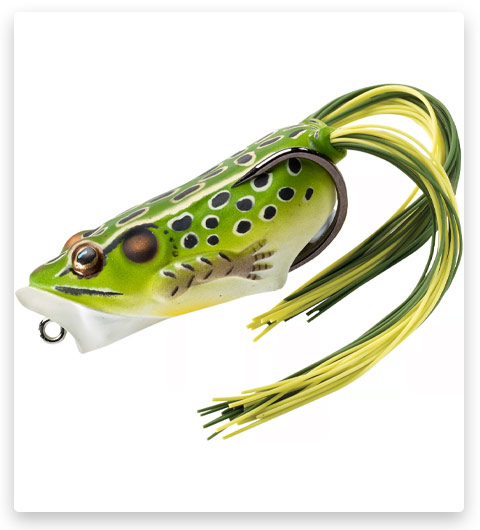
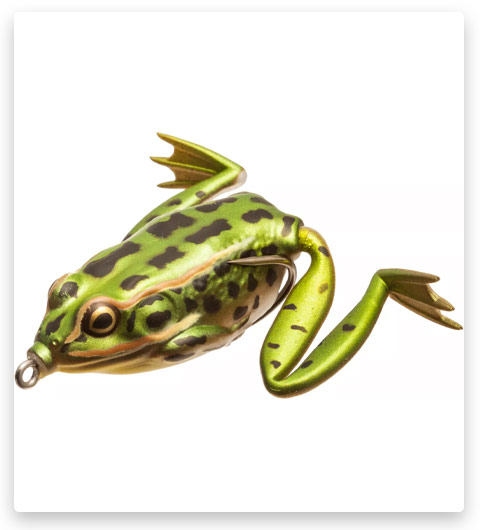

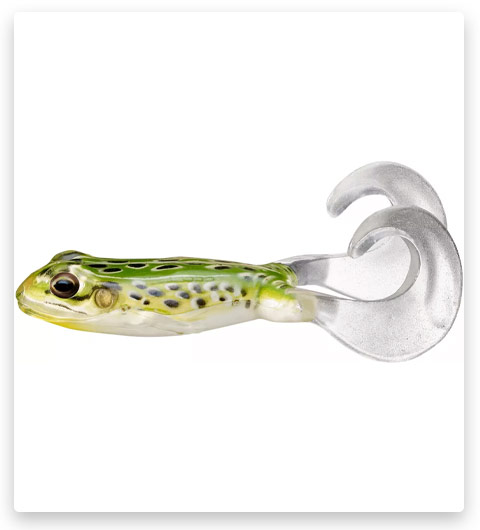
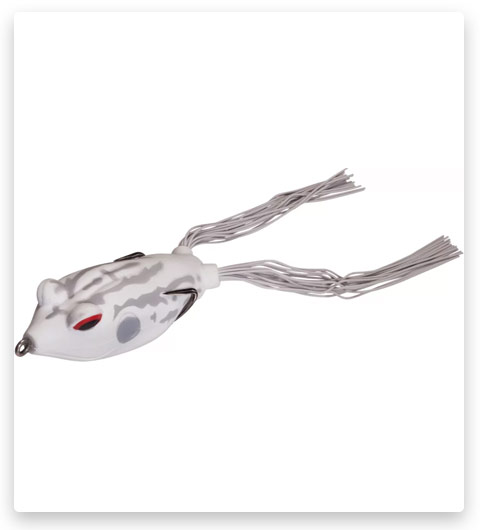
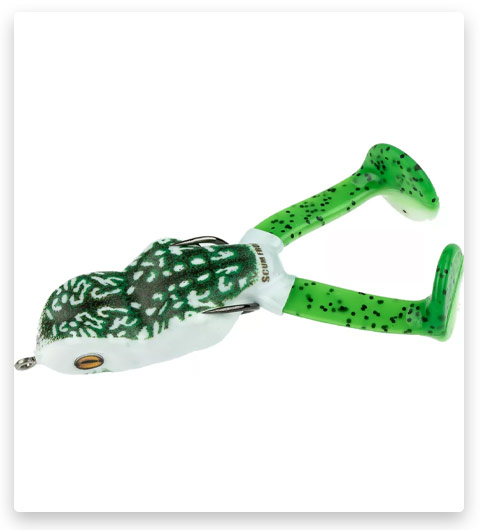
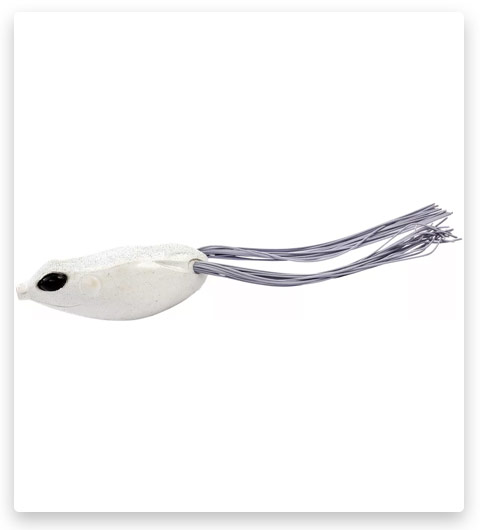
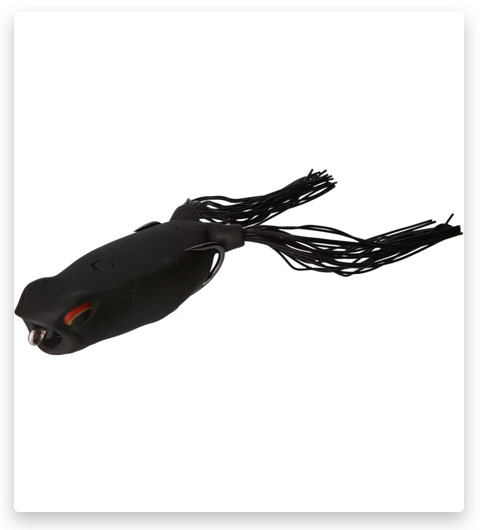
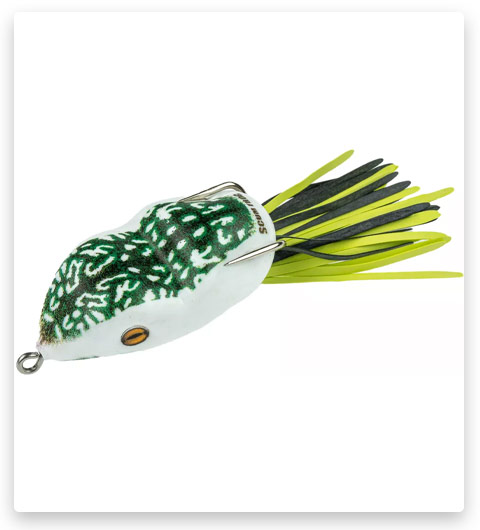
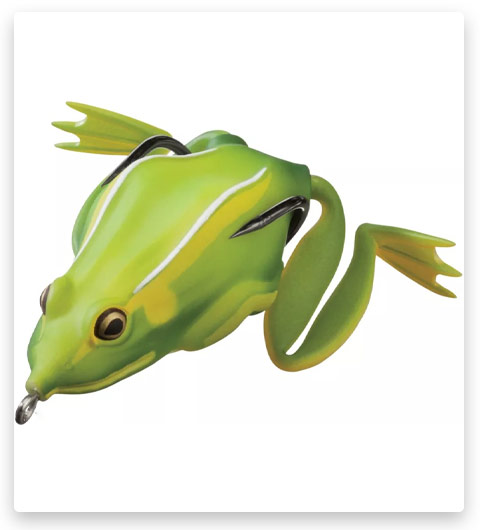
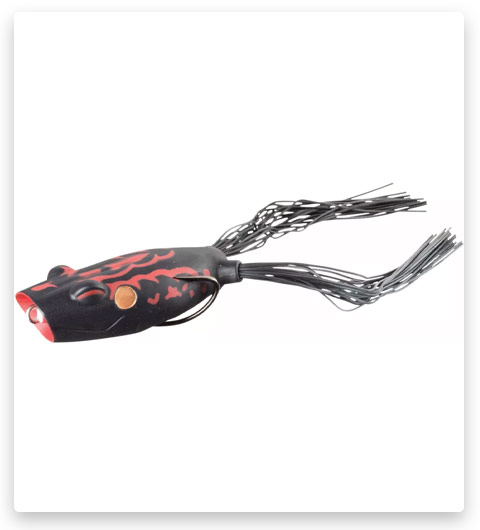
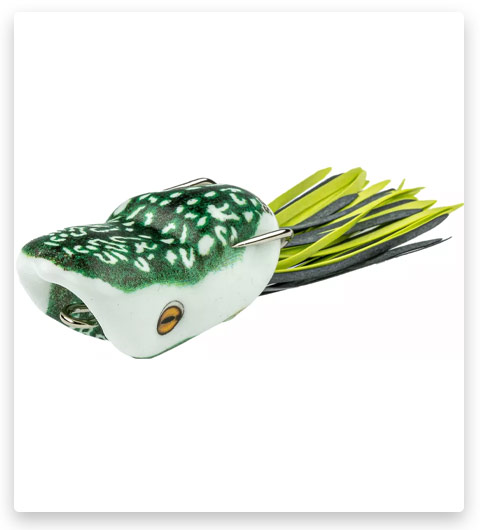
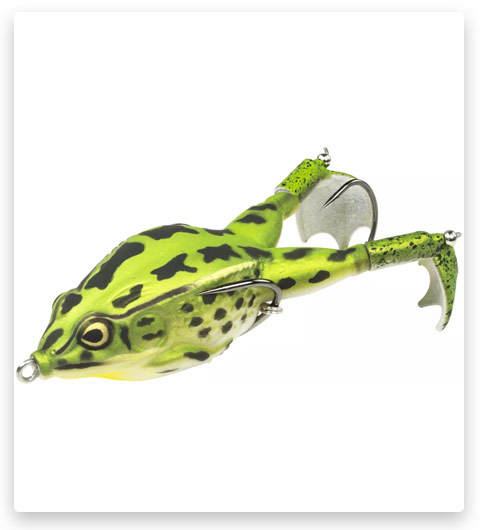
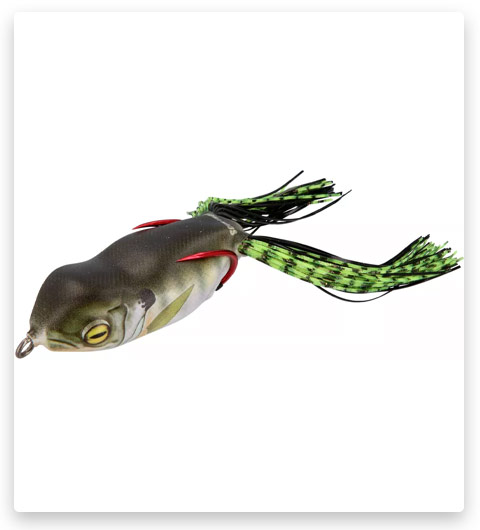
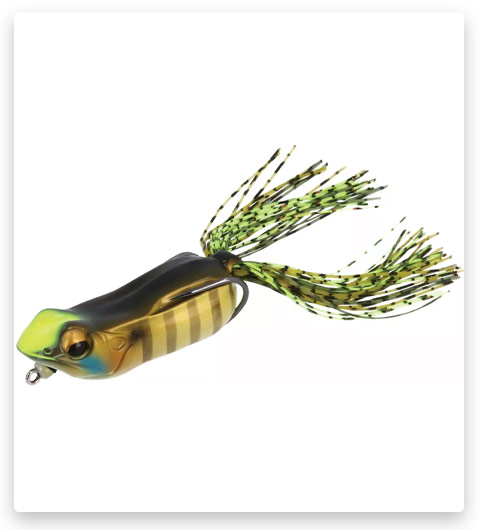
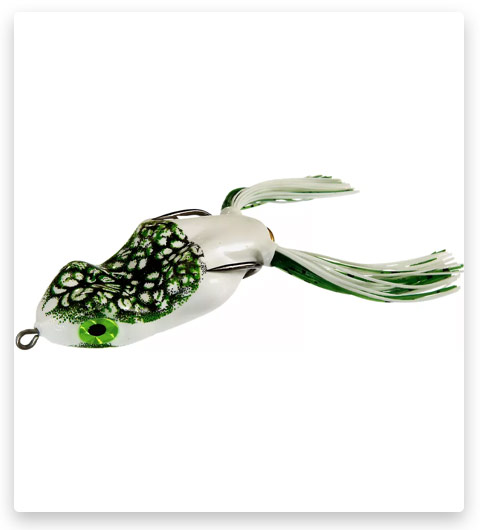
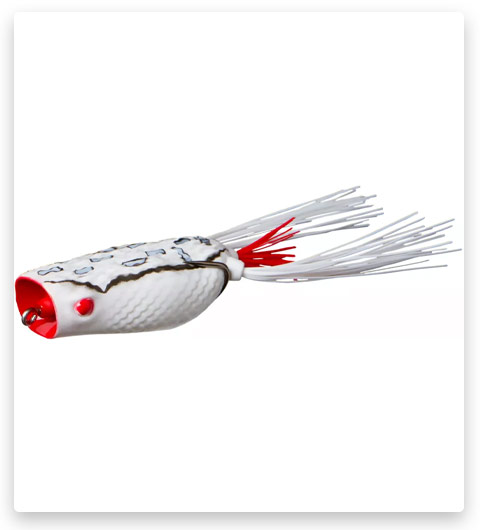
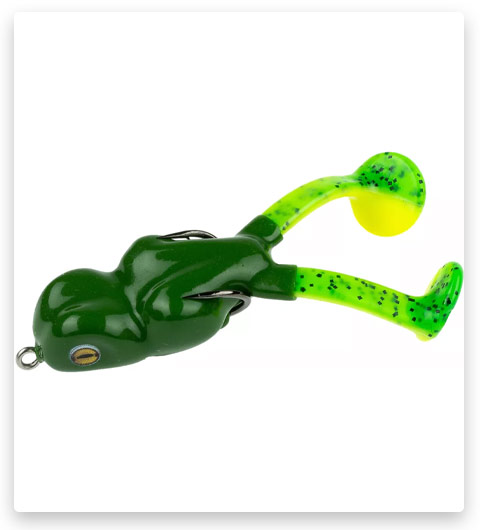
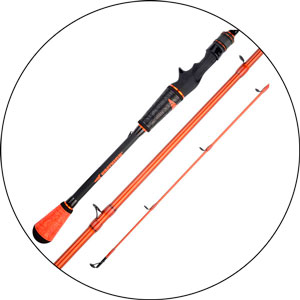
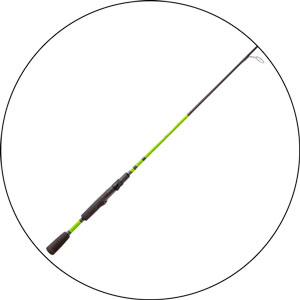

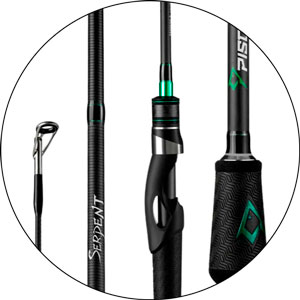
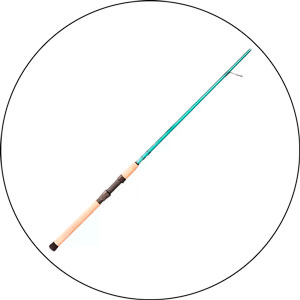

This article is a must-read for anyone interested in using frog lures for bass fishing. The comprehensive information and attention to detail make it an invaluable resource. I particularly like the advice on modifying frog lures to improve hook-up ratios – it’s a game-changer! Thanks for sharing your knowledge and helping anglers like me up our bass fishing game.
It seems like you’ve never encountered this issue with any of the frogs you’ve thrown over the years on the Delta. I agree with you – putting a leader in front of a frog is not a good idea. For larger topwater baits like spooks, punkers, and other walking-type baits, using a leader can be beneficial. However, it’s best to avoid using one with frogs. One suggestion to prevent line tangling under the hooks is to take a pair of pliers and slightly bend the hook points inward. This should help minimize the chances of tangling.
Excellent article on frog lures for bass fishing! I was happy to see some of my favorite lures mentioned, like the Lunkerhunt and Booyah frogs. One thing I’d add is the importance of patience when fishing with frog lures – sometimes waiting a few seconds after a strike before setting the hook can make all the difference. Keep up the great work, and tight lines!
It seems like you’ve experimented with various frog rods, and the best results you’ve experienced are with the Powell 736. It’s undoubtedly the top frog rod you’ve used so far. Pairing it with a high-speed reel and 50lb straight P-line braid, along with a River2Sea Bully Wa or Snag Proof Phat Frog, has proven to be a great combination. The key to walking the dog is in the tip of the rod and maintaining a bit of slack in your line, but not too much so you’re ready for a blow-up.
In your opinion, having the right rod that suits your preferences helps you work the frog more effectively. You’ve tried numerous rods specifically designed for frogging, ranging from 6’6″ to 7’6″, and found that a 7’3″ heavy action 6-power rod is the best. Since switching from a 7’6″, you’ve mentioned losing very few fish, which is impressive.
I’ve read many articles on frog lures, but this one really stands out for its clarity and thoroughness. The tips on gear selection and retrieval techniques are particularly helpful. I’ve struggled with hooksets in the past, so I’m eager to try bending the hooks slightly upward as suggested. Thanks for the valuable advice!
Like many others here, the original poster has been throwing frogs for years and only encountered this problem once. They use 65lb Spiderwire and typically don’t have any issues.
One suggestion is to check if the interior weight has come loose, as that could potentially cause the frog to rotate in an unusual way and grab the line. It’s also worth considering if the frog is rolling or tumbling off the water when it hits, which could be the reason it’s catching on the hooks. This situation indeed sounds quite peculiar.
Another tip is to use a black Sharpie marker to ink the line from the line tie up to 3 feet or more. Run the marker back and forth several times to apply a good coat on the line. This might give the line a little more weight and provide some additional stiffness, which could help alleviate the issue.
Fantastic article – very informative and well-written. I appreciate the detailed breakdown of the different types of frog lures and their applications. As a beginner to bass fishing, this guide has given me a solid starting point and confidence to try out frog lures on my next fishing trip. I can’t wait to see how they perform!
Here are two additional ideas to consider regarding the frog hook catching the line: One possibility is that if the line comes off the spool too quickly, particularly during an “overcast” (when you’re about to over spool, birds-nest, or experience a professional overrun), it might catch up to or even pass the frog, potentially snagging the hook. So, it’s worth checking your reel settings.
Another scenario that might occur, especially for those who tend to lob cast, is that the frog submerges upon landing, pulling the line down with it. When the frog resurfaces and if the line is above it, the frog hook could catch the line. This issue is more common with spooks or other large floating baits with big treble hooks.
I’ve been using frog lures for bass fishing for years, and this guide does an excellent job of covering the basics. The selection of top frog lures is spot-on, and I’ve had great success with a few of them myself. I’d also recommend trying out different colors and patterns to see what works best in your local waters. Keep up the good work!
As a fellow frog fishing enthusiast in their second season, I totally agree that having the right equipment is essential for success. A longer rod with a solid backbone and strong braid is necessary for hooking those big bass with all that extra weight from the vegetation. I’ve heard that the Falcon Cara Reaction 7’4″ H paired with a Revo S and 50lb Power Pro is a popular choice. For lures, Snag Proof Bobby’s Perfect Frog in white, black, or green, as well as Ribbit, Rage Tail, and Lake Fork frogs with a 6/0 Owner EWG plus hook seem to work well.
Another rod option that some anglers use is the Falcon Cara Amistad 7’3″ H, although it may not be as sturdy as the Reaction. However, it does seem to handle lighter frogs better and can throw a Tiki Snake more effectively.
As for Rage Tail toads, I’ve seen many positive comments about them being the best topwater “buzz” type frog on the market. They create more noise and disturbance at slower speeds compared to Ribbits, which are considered distant seconds. Interestingly, a fellow angler mentioned that sometimes bass prefers a faster-moving lure, and when the Rage Tail was sped up, it performed like a buzz bait without rolling over. The slim body profile also allows it to glide effortlessly through lily pads.
It seems that many anglers enjoy using Sizmic frogs with braided lines. A heavy rod with fast action is a popular choice for this type of fishing. Interestingly, they often change their techniques, as bass seem to prefer different presentations.
The Sizmic Pop N Toad is a great option when fishing slowly, as it can be quite effective in enticing bites. As for the best time to fish, many have found success during late evenings when the sun has been out all day and is just starting to set. However, there have been instances where they’ve caught fish during midday as well.
Keep in mind that Sizmic frogs are considered a big fish bait, so if you consistently use them, you’re likely to catch a big one sooner or later.
It’s worth noting that both Booyah and Spro make reliable frog lures. Popping frogs are particularly effective in open water or areas with light vegetation, while the regular frogs with pointed noses are better suited for flipping into reed pockets or navigating through heavier vegetation. The latter tend to come through cover more easily compared to popping frogs.
As for color preferences, brown is a popular choice, although white and yellow are also considered effective options. It’s a good idea to have a variety of colors in your tackle box, as they all have the potential to attract bites.
For those who plan to use just one frog rod, a heavy power option is recommended to ensure you’re prepared for fishing in dense grass or other challenging conditions. Enjoy your time on the water and have fun!
It seems that the Booyah Pad Crasher is a favorite among many anglers. With its ease of walking, soft texture, and reasonable price, it’s no wonder it remains a popular choice. Some also opt for a specific color in the Spro lineup that isn’t available in the Pad Crasher and may have a few King Daddy frogs in their collection. Despite trying various frog lures over the years, many anglers find themselves returning to the reliable Booyah Pad Crasher time and time again.